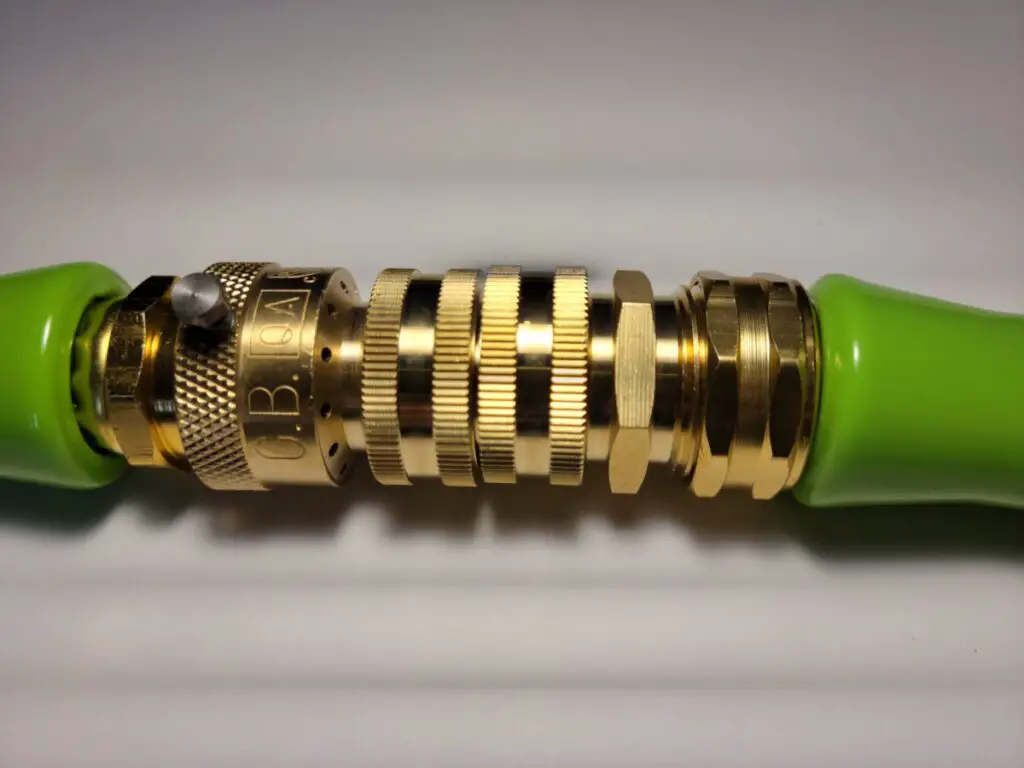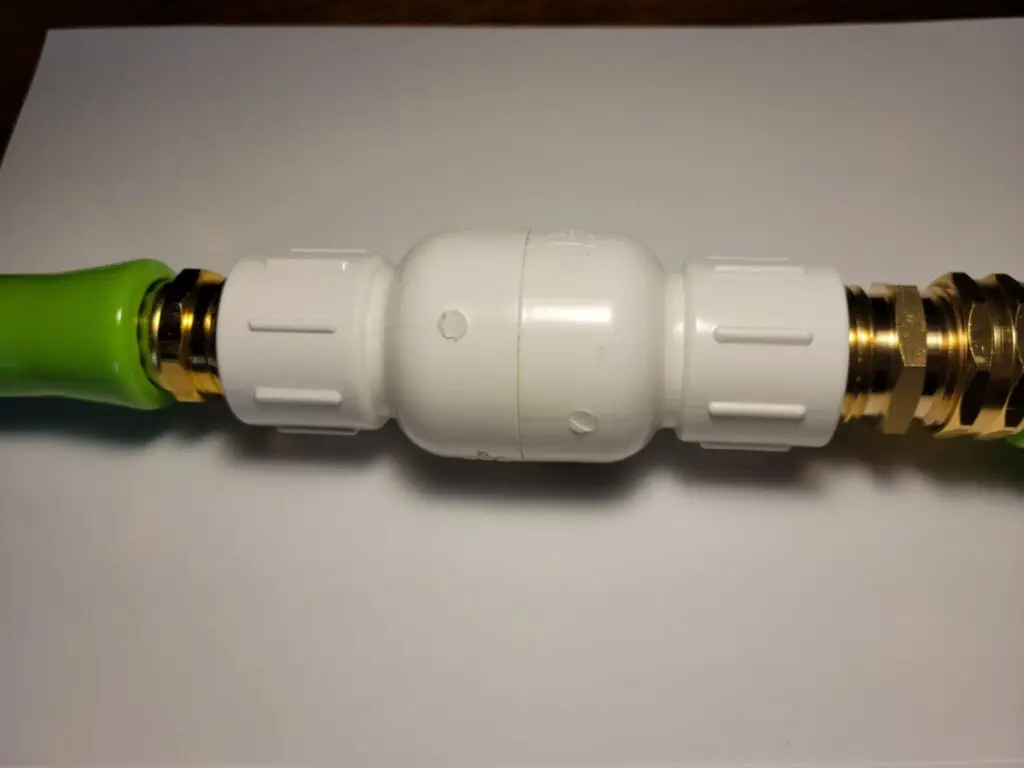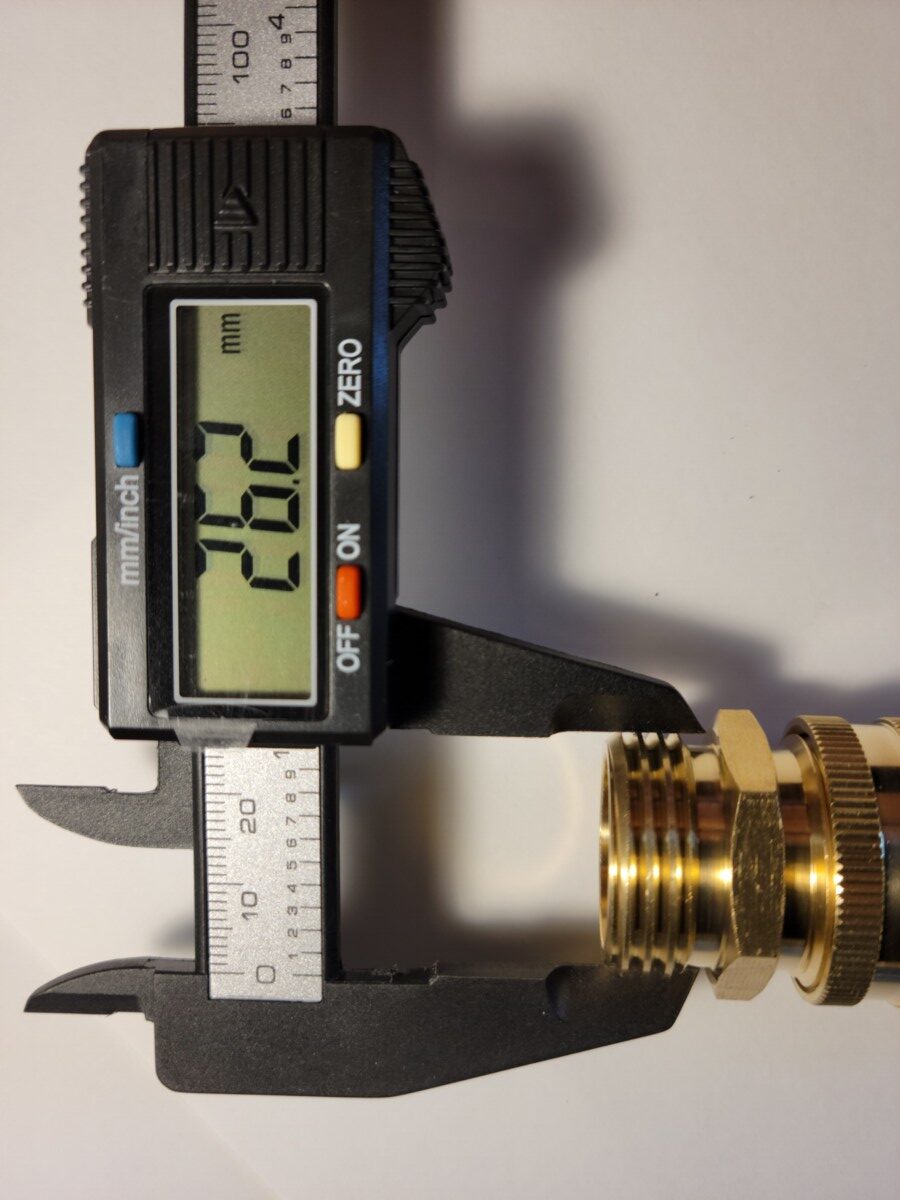
What is the difference between a backflow and a check valves?
The main difference bewteen the two items are there purpose. If you need to solve to much pressure in your garden hose you want to use check valves. These have a built in chamber that reduces pressure from the hose when sent in reverse, Reducing the chance the hose burst. Backflows are meant to avoid cross contamination a good example is giving below. A quick view of the Check valve below you can see the chamber used to address the pressure. Where when looking at the backflow preventer below you can see the preventer is simple a rubber disc that falls in to place well back flow is detected. Which ever you choose you should check the hose after install to ensure it is leak free. More on garden hose adapters here.
Do I need a backflow preventer on my garden hose?

Preventer valves on a hose in the garden would be used to avoid cross contamination. People use these when they have fertilizer systems directly feeding into there irrigation system. A great example of this is you have a garden with a fertilization system built in to the waterline. You want to install a outdoor sink or drinking faucet. In this case you do not want to risk fertilizer getting into the water drinking source for human consumption. A preventer placed at the intersection of water system to separate the water sources would be used here for safety. This system can be made from a couple of garden hoses and valves. A preventer will also work with drip pumps I recommend using brass fittings for drip. Brass fittings are need to not burst drip lines when pushing the limits of pressure in the system. Check the PSI rating of your drip line before trying this system in your garden.
What is the purpose of a hose check valve?

The purpose of a hose check valve is to prevent water from flowing in the wrong direction. The main reason to use a valve is to avoid (hammer pipe), from water pushing the wrong direction through a pipe system. This pressure can cause pipes to burst. An example of where this might be used is if you have two water sources feeding into a single system. Two much pressure from one source could force water into a different system causing pipe burst. A landscaper select this option to install valves when a pump or multiple sprinkler equipment are installed.
Where do you put a check valve on a hose water line?

Check valve should be placed above ground and outside on hose. Generally check valves are placed between the hose and the facets outside. Rather dealing with valves or backflow preventers, best practice is to place on facet before garden hose. You can use a quick connect to make using and removing the valve easier. Check valve connections regularly for leaks. Valves are known to leak which is why they are placed outside if possible. Remove from hose in winter, frozen water can break the valve.
Information on 3/4 hose valve

Finding garden hose valves can be difficult .Here are a few tips:
- Buy a 3/4 hose
- Pick brass fittings for sturdiness
- Check hose for PSI rating. Hoses made for the garden average 150 PSI rating more here.
Valves and preventers are great to use in the garden. We hope this information helps you use valves in your garden.

